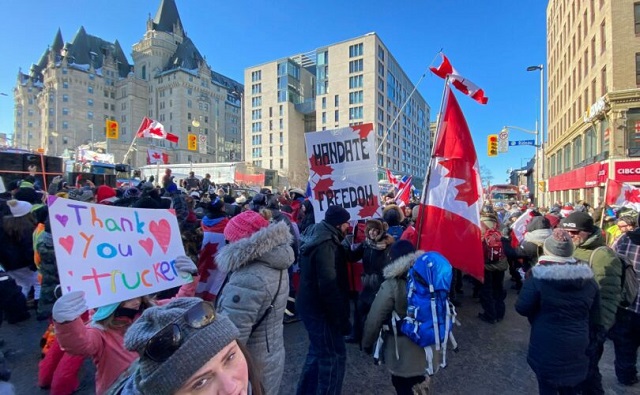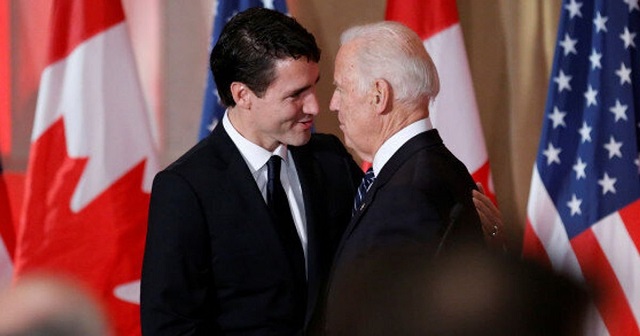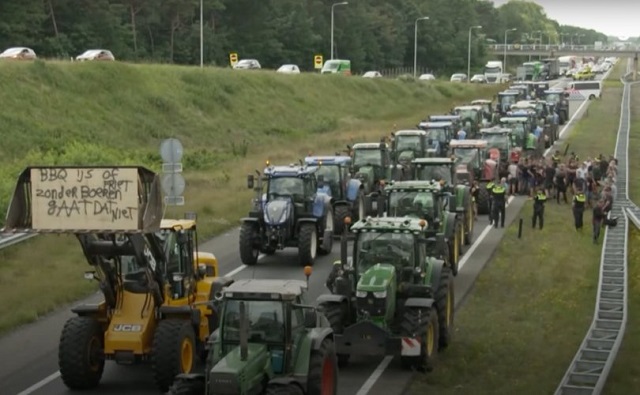Opinion
Red Deer holds the dubious title of having the poorest ambient air quality. The province has some ideas on that.

Our air quality in Red Deer has been very poor for years and I always felt that every level of government left it for the other levels of government to find a cure.
Our provincial government has taken steps since forming government in 2015. Some were expensive yet effective like reducing our dependency on coal. Some steps were eye ball rolling steps like doing more studies.
Our municipal government is taking steps and are talking about taking more steps. Let us hope that it finds the planning department and we can make the appropriate changes that I believe is necessary. For starters do we need all 5 high schools built and planned for, along 30 avenue and no high schools north of the river where 30% of the population resides? Would it mean a lot less commuting for 30% of the students if did not have to commute across the city to go to school and participate in extra-curricular activities? Just asking.
Studies are influenced by interpreters and interpretations, adding to or subtracting from parameters and by time lines. Different elements like SO2 or NOX if added or removed from comparables will affect the interpretations. In any interpretation we still have poor air. Possibly the worst air in Canada on average. Of course downtown Calgary, Toronto, or Edmonton may peak during rush hour traffic but overall we hold the title of worst ambient air quality.
So to recap. Let us go back to a story on CBC News.
Alberta is hoping to relieve Red Deer of a less than prestigious title. The central Alberta city, for years, has had the worst ambient air quality in the province. (CBC NEWS September 2015)
A report in September confirmed what many in the region already believed.
Industrial activity and vehicle emissions had pushed Red Deer’s ozone and fine particulate matter levels above national standards going back to 2009.
The province’s action plan, heavily based on its previously-announced plan to eliminate coal pollution by 2030, was introduced Thursday.
In a statement, Noah Farber of the Asthma Society of Canada said a reduction in coal pollution is a step in the right direction.
“The Alberta government’s commitment to the elimination of coal fired electricity generation is a positive step to improving air quality for all Albertans. This is particularly true for those with asthma and other respiratory diseases, who will now be able to breathe well and live healthy active lives,” Farber said.
The province is giving the Parkland Airshed Management Zone a grant of $250,000 to identify and monitor sources of pollution.
Another $560,000 will help a new air monitoring station in Red Deer provide more detailed identification of pollution sources for the region.
The Alberta Motor Association will continue driver education with an aim of reducing practices like idling, that increase emissions.
Red Deer outlined a series of actions the city was taking to address the issue following the September report, including buying 30 per cent of its energy from green sources and expanded public transit options, among others.
(CBC NEWS)
Alberta Environment Minister Shannon Phillips says the province is on track to have the worst air quality in Canada, and vows the government will put measures in place to reduce emissions from industry and vehicles.
“The time to act is long overdue,” Phillips said.
“We have a responsibility to do everything we can to protect the health of Albertans.”
Phillips made the remarks after seeing the results of the Canadian Ambient Air Quality Standards report, which show the Red Deer region has exceeded national standards. Four other regions — Lower Athabasca, Upper Athabasca, North Saskatchewan and South Saskatchewan — are close to exceeding national standards.
Phillips said there is no immediate health risk for people living in central Alberta.
“These results are concerning,” Phillips said in a news release. “We can’t keep going down the same path and expecting a different result. Our government has a responsibility to protect the health of Albertans by ensuring air pollution from all sources is addressed.”
The province will initiate an “action plan” to deal with poor air quality in the Red Deer area, a move she said is required under the Canadian Ambient Air Quality Standards.
The government said a scientific study looking into the cause of the air pollutants is currently underway, and people living in the Red Deer area, industry stakeholders and the provincial energy regulator will be consulted. That plan is expected to be complete by the end of September and will take Red Deer’s geography and air patterns into consideration.
As part of the plan, Phillips said the government will:
Review technology that could be used to reduce emissions.
Review whether polluters in Alberta are meeting national standards.
Look at other ways to reduce emissions, for example, ways to curb vehicle emissions.
The Pembina Institute, non-profit think tank focused on clean energy, was quick to follow up with its own statement about the air quality results, saying the report shows the need for a provincewide pollution reduction strategy.
“This new report adds to the mounting evidence that Alberta needs to reduce air pollution across the province. Measures that will produce more rapid results are also needed in the numerous regional hot spots identified by the report,” said Chris Severson-Baker, Alberta’s regional director at the Pembina Institute.
“The report shows that, unless emissions are cut, most of the province risks exceeding the Canadian Ambient Air Quality Standards for fine particulate matter. This places an unacceptable burden on people’s health and on the environment,” he said.
The Canadian Association of Physicians for the Environment has also weighed in on the report, saying it is “dismayed, but not surprised” by the findings.
“This calls into question the pervasive belief that the clear blue skies of Alberta foster clean air, safe from the pollutants better known from smoggier climes,” said Dr. Joe Vipond, an emergency room doctor and member of the association.
Phillips blamed the previous Tory government for contributing to the rising pollution levels, saying the PCs resisted meaningful action on climate change.
Canadian Ambient Air Quality Standards are national standards for particulate matter and ozone exposure.
I received this e-mail this past week from the Director of Air Policy for the Government of Alberta. The Premier did not toss my concerns into the wastebasket but forwarded it to someone who can actually answer some questions. Spoiler alert, there will be some eye-ball rolling.
My name is Hamid Namsechi and I am the director of Air Policy for the Government of Alberta. Premier Notley forwarded a copy of your letter regarding your concerns about air quality and the need for action to reduce air pollution in Red Deer.
The Government of Alberta takes the health of Albertans very seriously. There are many agencies both inside and outside government that look after protecting the quality of our environment. For example, while the Departments of Health and Environment and Parks are responsible for human and environmental health policies and outcomes, agencies such as Alberta Energy Regulator, Clean Air Strategic Alliance, Alberta’s ten airshed organizations, Alberta municipalities, etc. all work collaboratively to ensure the quality of air in Alberta meets all provincial and national standards.
As for action on emissions, you will be happy to know that significant progress has been made since the 2011-2013 Red Deer air quality assessment report was released in September 2015. For starters, part of taking action on reducing fine particulate matter in Red Deer is improving the state of knowledge. Until 2014, Red Deer Riverside was the only monitoring station in the Red Deer area. The Red Deer Lancaster monitoring station was added as a second air quality monitoring station in late 2014. This station will help us to understand if fine particulate matter concentrations vary in different parts of the City of Red Deer.
In April 2016, the Government announced funding for two significant studies to take place in Red Deer. One study involved air quality modelling to determine the relative impact of various sectors on the air quality in Central Alberta. The other is a long-term monitoring study which has commenced sampling and will continue to sample fine particulate matter at three locations in and around the City of Red Deer. These studies will provide valuable information regarding likely sources of emissions that are contributing to the issue of high fine particulate matter concentrations in the City of Red Deer.
Direct action has been taken to reduce emissions from the coal-fired electricity generation at the Battle River site – the biggest source of air pollution in the Red Deer region. As you are aware, coal plants produce a number of air pollutants when they burn coal to make steam to generate electricity. During combustion in air, the sulphur dioxide (SO2), various nitrogen oxides (NOx), mercury (Hg), primary particulate matter (PM) and a number of other emissions such as heavy metals are produced as by-products. The operating permit of the Battle River units has now been revised and recent records show that emissions are down by over eighty percent from pre-2015 levels.
Similarly, all industrial approvals for other facilities in the Red Deer region are currently being systematically looked at for opportunities to reduce emissions. After Minister Phillips news conference in 2015, industrial approvals staff in both Alberta Environment and Parks as well as the Alberta Energy Regulator have stepped up the stringency of the emissions standards for facilities operating in stressed airsheds.
As for reducing the volume of non-industrial emissions, there has also been a lot of progress since 2015. Alberta Government has been working with the Clean Air Strategic Alliance, federal Government, Alberta municipalities, agricultural sector, industry and environmental non-governmental organizations to develop strategies to reduce the cumulative impacts of emissions from the many small sources (such as transportation).
The good news in all of these from the ambient air quality perspective is that Red Deer’s latest fine particulate matter readings have substantially improved since the Minister’s news conference. Our preliminary assessment of the 2016 annual average for PM2.5 at Riverside Station shows a forty six percent reduction compared to the historical high levels, which puts the current air quality in Red Deer in the yellow range.
Thank you for taking the time to share your concerns with the Government of Alberta.
Sincerely,
Hamid Namsechi, P.Eng.
Air Policy Director
Policy & Planning Division
Environment and Parks
So we have seen some improvements, will it be enough? Is it just another interpretation?
Alberta Sheriffs Branch
Crown appeal against acquitted peaceful protestor Evan Blackman back in court June 19

News release from the Justice Centre for Constitutional Freedoms
The Justice Centre for Constitutional Freedoms announces that a hearing date for Evan Blackman’s summary conviction appeal has been set for June 19, 2024. The hearing will take place at the Ontario Superior Court of Justice in Ottawa.
The Crown’s evidence against Blackman at his trial consisted of a 14-minute drone video, with no sound, and the testimony of one officer from the scene. For nine minutes of that video, Blackman is seen as part of a group of protestors standing across from a line of police officers on Rideau Street in downtown Ottawa. Blackman is shown de-escalating the situation by holding other protestors back and putting his hand up to stop them from confronting the officers. He is then seen kneeling in front of police for the five minutes prior to his arrest. At one point, while on his knees, he takes off his hat, puts his hands on his chest, and starts singing Canada’s national anthem.
The Ottawa Crown Attorney’s Office is appealing Blackman’s acquittal on charges of mischief and obstructing the police relating to his participation in the Freedom Convoy protests, specifically on February 18, 2022, the day police conducted an “enforcement action” – clearing Ottawa city streets following the invocation of the Emergencies Act by the federal government four days prior.
Blackman was acquitted after a one-day trial on October 23, 2023. The Justice Centre provided lawyers for Blackman’s defence at that trial and continues to support him throughout this appeal.
At trial, Mr. Blackman pled “not guilty” to all charges. The judge dismissed the case against him due to limited evidence and the poor memory of a police witness on key elements of the criminal offenses.
After his February 18, 2022 arrest and release the same day, Blackman discovered his three bank accounts had been frozen pursuant to the Emergency Economic Measures Order.
Chris Fleury, lawyer for Blackman, notes that if his client had been convicted, his intention was to bring an application for a stay of proceedings under section 24(1) of the Charter, seeking a remedy for the freezing of Mr. Blackman’s bank account. If Mr. Blackman’s acquittal is overturned on appeal, he intends to file this application.
Chris Fleury says, “The limited evidence available at Mr. Blackman’s trial showed Mr. Blackman attempting to de-escalate a volatile situation between police and protestors on February 18. He pled not guilty to the criminal offences that he was charged with, and the trial judge ultimately agreed and found him not guilty. This appeal is an attempt by the Crown to reframe findings of fact that they disagree with as legal errors. Mr. Blackman and I are looking forward to our day in Court at the appeal hearing.”
John Stossel
The Swamp Survived: Why Trump Failed to “Drain the Swamp”

From StosselTV
As a presidential candidate, Donald Trump promised to “drain the swamp.” He didn’t.
Trump made government bigger. He hired new employees, doubled federal spending, and started a bunch of new programs. Now the swamp is bigger.
In our new video, Economist Ed Stringham explains the real way to drain the swamp is to cut the spending that swamp creatures feed on.
After 40+ years of reporting, I now understand the importance of limited government and personal freedom.
——————————————
Libertarian journalist John Stossel created Stossel TV to explain liberty and free markets to young people.
Prior to Stossel TV he hosted a show on Fox Business and co-anchored ABC’s primetime newsmagazine show, 20/20.
Stossel’s economic programs have been adapted into teaching kits by a non-profit organization, “Stossel in the Classroom.” High school teachers in American public schools now use the videos to help educate their students on economics and economic freedom. They are seen by more than 12 million students every year.
Stossel has received 19 Emmy Awards and has been honored five times for excellence in consumer reporting by the National Press Club. Other honors include the George Polk Award for Outstanding Local Reporting and the George Foster Peabody Award.
————
To get our new weekly video from Stossel TV, sign up here: https://www.johnstossel.com/#subscribe
————
-

 Automotive2 days ago
Automotive2 days agoVehicle monitoring software could soon use ‘kill switch’ under the guise of ‘safety’
-

 Bruce Dowbiggin2 days ago
Bruce Dowbiggin2 days agoIt Gets Late Early These Days: Time To Bounce Biden & Trudeau?
-

 Energy2 days ago
Energy2 days agoNet Zero’s days are numbered? Why Europeans are souring on the climate agenda
-

 Opinion2 days ago
Opinion2 days agoClimate Murder? Media Picks Up Novel Legal Theory Suggesting Big Oil Is Homicidal
-

 Brownstone Institute2 days ago
Brownstone Institute2 days agoBook Burning Goes Digital
-

 Alberta1 day ago
Alberta1 day agoGame changer: Trans Mountain pipeline expansion complete and starting to flow Canada’s oil to the world
-

 conflict2 days ago
conflict2 days agoOver 200 Days Into War, Family Of American Hostage in Gaza Strives For Deal To Bring Son Home
-

 Community1 day ago
Community1 day agoLast Day: What would you do with $20,000 Early Bird Prize?






